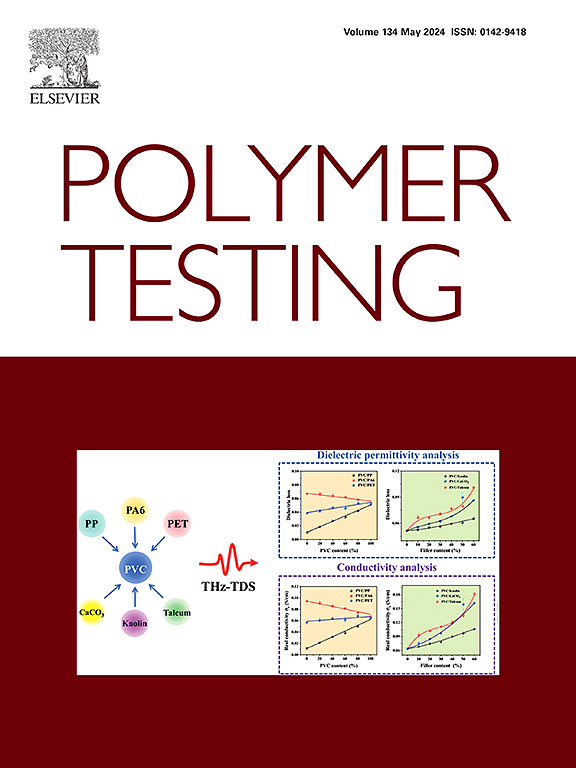Maximum elongation degradation model and service life prediction for HTPB propellant under constant strain and chemical aging effects
IF 5
2区 材料科学
Q1 MATERIALS SCIENCE, CHARACTERIZATION & TESTING
引用次数: 0
Abstract
To accurately predict the service life of the hydroxy-terminated polybutadiene (HTPB) propellant, in this study, we constructed a maximum elongation degradation model that comprehensively considers physical damage and chemical aging effects. Specifically, we conducted accelerated thermal aging and uniaxial tensile tests under different constant strain conditions to obtain performance degradation datasets. Additionally, a new degradation performance characterization model was proposed, which was validated and improved based on the correlation between the Williams-Landel-Ferry (WLF) and Arrhenius equation parameters. Finally, we performed HTPB propellant service life prediction and verification for the proposed model based on the performance data under natural storage for 22 and 26 y, and compared our results with those of traditional methods. The prediction results of the improved model were more consistent with the natural storage estimated results compared to the traditional model, with a relative error of only 7.5 % and an accuracy improvement of 75 %. This study serves as a reference for efficient resource allocation and equipment maintenance planning, thus effectively avoiding economic losses caused by resource wastage.
求助全文
约1分钟内获得全文
求助全文
来源期刊

Polymer Testing
工程技术-材料科学:表征与测试
CiteScore
10.70
自引率
5.90%
发文量
328
审稿时长
44 days
期刊介绍:
Polymer Testing focuses on the testing, analysis and characterization of polymer materials, including both synthetic and natural or biobased polymers. Novel testing methods and the testing of novel polymeric materials in bulk, solution and dispersion is covered. In addition, we welcome the submission of the testing of polymeric materials for a wide range of applications and industrial products as well as nanoscale characterization.
The scope includes but is not limited to the following main topics:
Novel testing methods and Chemical analysis
• mechanical, thermal, electrical, chemical, imaging, spectroscopy, scattering and rheology
Physical properties and behaviour of novel polymer systems
• nanoscale properties, morphology, transport properties
Degradation and recycling of polymeric materials when combined with novel testing or characterization methods
• degradation, biodegradation, ageing and fire retardancy
Modelling and Simulation work will be only considered when it is linked to new or previously published experimental results.
 求助内容:
求助内容: 应助结果提醒方式:
应助结果提醒方式:


